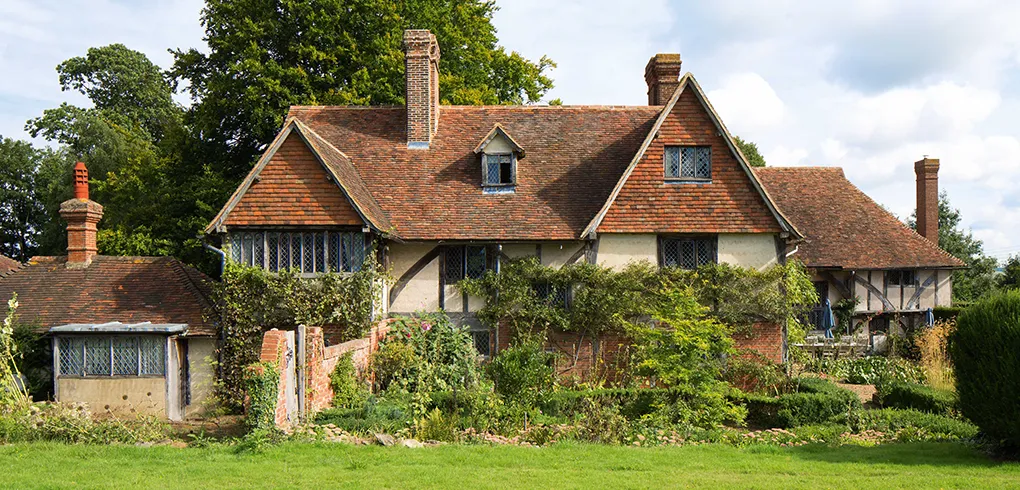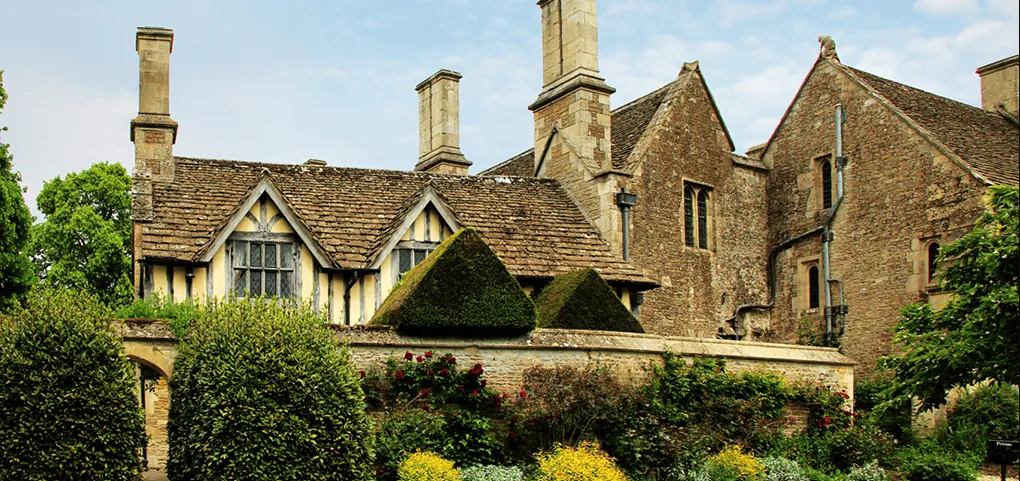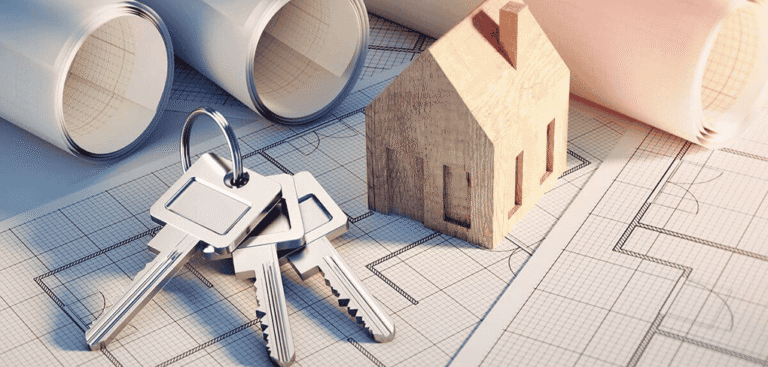
Can You Get a Mortgage on a Grade 2 Listed Building?
Want to know if you can get a mortgage on a Grade 2 listed building? Learn about what listed buildings are, which lenders offer mortgage on them and more.
speak to a mortgage advisor
Fill out this enquiry form and we’ll contact you to book a free call with one of our mortgage experts.
"*" indicates required fields
With their rustic charm and numerous period features, it’s easy to see why living in a historic home is so appealing to many homeowners. But if you’ve always believed that mortgages on listed properties are difficult to get, we’ve got some good news.
Getting a Grade 1 and Grade 2 listed building mortgage is much easier today, especially when you have assistance from an independent mortgage broker like John Charcol. This guide will explain everything you need to know about mortgages on listed properties across the UK.
Contents
What Are Listed Buildings?
Listed buildings are structures of special historic or architectural interest, considered of national importance, and have extra legal protection. When a building is “listed”, it’s added to the national register of buildings with architectural or historical importance. There are 4 statutory lists in the UK which are maintained by Historic England, Historic Environment Scotland, Cadw in Wales and the Northern Ireland Environment Agency.
In England and Wales, listed buildings come under 3 categories, each with a different level of significance.
- Grade 1 listed buildings: buildings of exceptional interest, both nationally and historically
- Grade 2*: buildings with more than a local interest
- Grade 2: buildings of special interest
Most listed buildings occupied by homeowners are likely Grade 2 listed, making up 92% of the total number of listed buildings.
Scotland and Northern Ireland’s listed building register works similarly to England and Wales. Scotland grades its listed buildings A, B and C, while Northern Ireland’s system uses A, B+, B1 and B2.
What Do Lenders Define as a Listed Building?
Mortgage lenders recognise the national listing process and will look at the Grade and valuers’ comments about the condition of the building when considering a mortgage application on a listed building. So, how does property grade listing affect mortgage approval?
- Grade 1 listed buildings usually require the most care, which is why most lenders won’t lend on these listed buildings. These properties are more likely to have issues with their structure due to their age, are not always habitable and can be difficult to sell. Only a few providers will lend on Grade 1 listed buildings
- Grade 2* listed properties are more mortgageable than Grade 1
- Grade 2 listed buildings are the most common but require more maintenance than non-listed properties

Can You Get a Listed Property Mortgage?
Listed property mortgages are available, but securing one is not as straightforward as for non-listed homes. Listed properties are considered non-standard construction by lenders and have several implications that can affect resale potential, which is a significant concern for traditional lenders.
For example:
- The property’s age may mean it will likely deteriorate more quickly than a standard building and experience a faster decline in value
- Restrictive covenants on the property will make it harder for the homeowner to carry out maintenance, repairs, renovations or remove certain features
- Listed properties often have high maintenance costs and require specialist trades, such as thatchers, and lenders will want to be sure that buyers can afford these costs
- Niche and non-standard construction properties can be harder to resell than standard properties and are typically viewed by lenders as high-risk investments
Grade 1 Listed Building Mortgage
Getting approved for a mortgage on a Grade 1 listed building can be challenging but not impossible. A few lenders will consider lending on a Grade 1 listed building. However, due to their unique restrictions and stringent upkeep and maintenance requirements, only a few lenders can accept these types of properties.
Grade 2 Listed Building Mortgage
It is possible to get a mortgage for a Grade 2 listed building. However, these properties pose a greater risk to lenders than a standard home. Before deciding whether to approve you for a mortgage, lenders will want to assess the property’s resale potential in the event of repossession. While many lenders shy away from lending on Grade 2 listed buildings, there are many other mortgage lenders that are more familiar with this type of market. They will offer competitive mortgages for these types of properties.
Which Lenders Offer Grade 2 Listed Building Mortgages?
While an independent mortgage broker such as John Charcol will be able to advise you on which lenders offer Grade 2 listed building mortgages at the most competitive rates, here are some lenders that offer these types of mortgages:
- Accord Mortgages (part of Yorkshire Building Society)
- Nationwide
- HSBC
- Kensington Mortgages
- Virgin Money
- Family Building Society

How Can You Get a Mortgage on a Grade 2 Listed Building?
Like with any non-standard construction home, getting advice from an independent mortgage broker with experience in this market is a good idea.
You’ll also want to carry out the following steps.
Get a Property Valuation
The property valuation often influences a lender’s decision to approve a mortgage. It will tell the lender if any defects or features of the property could adversely affect its value. That’s why your lender must be already familiar with unusual properties, such as Grade 2 listed buildings. But it’s not guaranteed you’ll be accepted for a mortgage, which is it’s recommended that you arrange your own survey as early as possible to flag any issues.
Check Insurance Eligibility
Due to their age and maintenance requirements, getting insurance for a Grade 2 listed building is often very expensive. It’s therefore important to try to get the property approved by an insurer or at least a firm quote before you commit to buying it. Standard insurance is not always suitable for Grade 2 listed buildings, so you may have to approach a specialist insurer.
Find a Qualified Surveyor
Before buying a listed property, you must organise a full structural survey. These can be expensive but well worth the cost. You can use the information from it to help you decide whether to purchase the property and help you when it comes to carrying out maintenance or repairs. Try to choose a surveyor with good experience of working with historic buildings.
Check Previous Building Work
If the previous owners carried out building works on the Grade 2 listed building without the proper approvals, you may be liable for it if you buy the property. Therefore, you should check that the appropriate consent has been given for any alterations made to the property before you commit to buying.
Are There Any Restrictions When Buying a Grade 2 Listed Building?
As is typical with non-standard construction properties, you may find certain restrictions when buying a listed building which could limit your choice of lenders. The seller should declare any restrictive covenants that are on the property deeds. But these will come up anyway during the property survey, so you’ll have some warning about any restrictions before you commit to purchasing the property. Some common restrictions you may come across are:
Consents
You’ll likely need consent from your local planning authority before you make any changes to a listed building. As listed buildings are protected by law, homeowners must obtain listed-building consent before making any changes to the inside or outside of the property. Making any alterations to a listed building, however minimal, without listed building consent is a criminal offence and you may face prosecution.
Generally, you can use like-for-like materials and methods to maintain a listed building without prior consent. However, if you want to replace window fittings, you must be careful as this could be part of what makes the property a certain a listing.
Repairs and Maintenance
The age and characteristics of a listed building mean that they need more maintenance and repair work than other properties, which often forms part of the lender’s terms. While it will need regular upkeep, you can’t just use off-the-shelf materials. You may need specialist help which will come at an additional cost. While you’ll want to factor the extra maintenance costs into your budget, lenders often want to include them in their affordability assessments. The lender may decline your application if it determines that your finances aren’t sufficient to cover the necessary expenses of maintaining a Grade 2 listed building.
How Much Deposit Do You Need for a Grade 2 Listed Building Mortgage?
Most lenders will have a set minimum deposit requirement. Grade 2 listed buildings present greater risk than standard properties, so those lenders considering these properties often have more stringent lending criteria.
Most lenders cap the maximum loan-to-value at 80% – 85%, so you’ll need to put down a 15% – 20% deposit for a listed building mortgage.
As with any property purchase, a larger deposit will open the door to a greater selection of lenders and more competitive rates. If you present risk in other areas, such as your credit history, a higher deposit may help to sway lenders to consider your application.

How Much Can You Borrow for a Grade 2 Listed Building Mortgage?
Lenders typically use income multiples as an initial starting point, with the standard allowance between 3.5x – 4.5x your annual income. If your annual income is £40,000, you could be offered a mortgage in the region of £140,000 to £180,000. However, this will depend on your circumstances and the specific lender.
Can You Get a Buy-to-Let Mortgage on a Listed Building?
Buy-to-let listed building mortgages are available through niche lenders. However, many lenders require you to have prior experience maintaining a Grade 2 listed building. Most lenders will likely decline your application if it’s the first Grade 2 listed building you’ve owned. A specialist mortgage broker such as John Charcol can advise you on the most suitable lenders in these circumstances.
Can You Get a Mortgage on a Grade 2 Listed Building if I Have Bad Credit?
As with all types of mortgages, getting a mortgage on a listed building is possible even if you have a bad credit history. However, the eligibility criteria will vary depending on the lender. The recency and size of your credit issues will also impact a lender’s decision. If you’re approved for a mortgage on a Grade 2 listed building despite having bad credit, you may be required to pay a larger deposit and subject to higher interest rates.
What Do You Need to Consider When Purchasing a Grade 2 Listed Building?
Buying a listed building is more complex than purchasing a typical home. Here are some things you’ll need to consider before purchasing a listed property:
What Are the Rules for Making Alterations and Repairs?
Even though you may own the building, if you want to make any alternations to a listed building, you must get consent from your local authority – even it’s just replacing the front door. You may also need consent for repairs, as what constitutes a repair often varies depending on the particular council in the area. Speak to the conservation officer at your local authority; they’ll be able to advise you on this.
Will You Have to Rectify Unauthorised Work?
If the previous owners made changes to the listed building without consent, you could be liable for them, even though it was before your ownership. Depending on the changes, you may find it very expensive to rectify. If you discover that unauthorised changes have been made to the property before you purchase it, indemnity insurance may protect you. Speak to your solicitor for further advice on this.
Can You Keep on Top of Renovations?
When you own a listed building, you are responsible for preserving its integrity while maintaining it well. Maintenance on a listed property can often cost significantly more than a standard modern home. To preserve the building’s original characteristics, you’ll need to source original materials and use specialist trades, making it more expensive. Under section 115 of the Town and County Planning Act 1971, local authorities can also demand immediate repairs upon the purchase of a listed building.
Can You Afford Insurance on a Grade 2 Listed Building?
The cost of home insurance is typically based on the cost of rebuilding the property in the event of severe damage. As listed buildings are often built using materials and techniques that aren’t common today, they typically have higher rebuild costs which can make insurance considerably more expensive.
Buying a Grade 2 listed building doesn’t have to be as challenging as it may appear, as long as you do plenty of research and understand what you are taking on. Your local conservation officer should be able to answer any questions about the building. After all, their aim is to help homeowners preserve the uniqueness and beauty of these special properties.
If you have any questions about mortgages on listed properties across the UK, get in touch with our independent mortgage experts. At John Charcol, we have access to a huge range of mortgage products and lenders and will guide you through each step of the process. We can help you find the right mortgage for your circumstances. Contact us today on 023 8235 2300 or submit an online enquiry to find out more.
